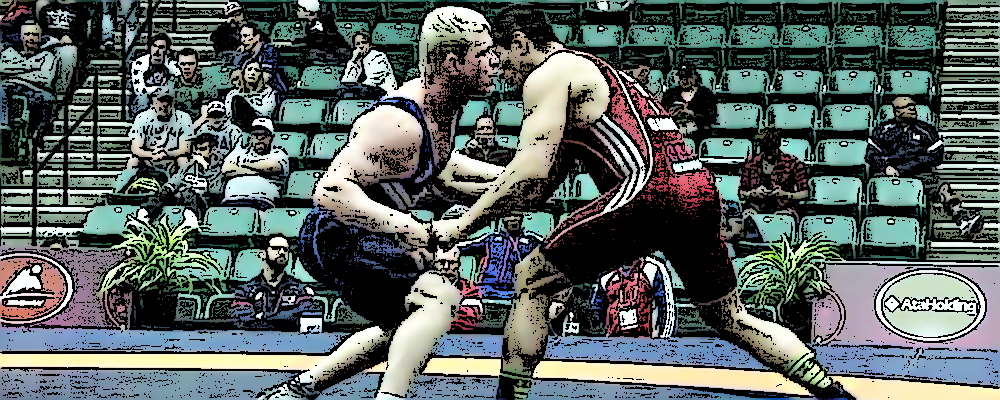Despite having amassed an impressive array of titles throughout his career, one gold missing in Cheney Haight’s medal collection was from the Pan-American Championships. However, the absence of this piece of hardware did not affect how Haight is and was viewed by contemporaries.
Beginning with his come-up while a student at Northern Michigan during the mid-aughts, to his recent resurgence following what could be described as a “sabbatical”, the snowboard-loving native of Utah is recognized as one of the nation’s most complete and efficient Greco-Roman athletes. Haight is brutally tough and highly-skilled; and with an eye on the chance to earn a spot on the 2016 Olympic Team this past April, the Pan Am Championships (held in Frisco, Texas in late February) represented a potential momentum-builder for him hea into the Trials.
Haight’s first round match at the Pan Ams saw him make very quick work of Enrique Cuero Ortiz (ECU). It was all really a blur. Haight opened with an arm-throw for four, secured a takedown shortly thereafter, and gutted Cuero Ortiz out of dodge for the match-winning points. The entire bout lasted around :90. But what really set him up for the tournament title was his semifinal battle with Chile’s Claudio Gamboa Zuniga. Now, it’s one thing to be a level (or two) above your opposition; it’s quite another to understand the skill disparity and execute accordingly.
Haight understood.
Cheney Haight (USA) vs. Claudio Gamboa Zuniga (CHI)
80 kg Semifinal – 2016 Pan-Am Championships
Part of Haight’s style is to create purposeful, angled pressure. Often, this comes from finding a tie that he prefers whilst breathlessly (literally) feeling for potential locks and throw attempts. Gamboa quickly realized that Haight was going to force the issue and clammed up just a little. It was enough to earn a passivity warning around a minute in. When the rules actually work, they lead to scoring opportunities.
Clamping under Gamboa’s left arm, Haight lifted up his tie, dipped down, and grabbed a bodylock. The swift level change performed in one motion allowed for a true lock nearly instantly. Haight then immediately followed up with a gutwrench to take a four-point lead.
After the re-set, Haight once again found a two-on-one and straightened it out. This compromised Gamboa’s feet position; and then due to physics, nature, and the principles beholden to cause-and-effect, Gamboa turned back into Haight. This time, the American had a slightly smaller window to penetrate underneath, where he used his two-on-one to duck under Gamboa’s left side. Haight hastily swooped down and locked around for another two points in conjunction with six-point cushion. A gutwrench to put a bow on the thing came soon enough.
Haight went on to win the 80 kg category at the Pan-Am Championships, defeating Maximiliano Prudenzano (ARG) in the final 2-0 by virtue of a passivity/par terre gut. That match was close. The first two were not — with Haight’s semifinal destruction of Gamboa serving as a clear reminder of what he is capable when clicking. Coaches talk all of the time about making sure athletes follow their opponents to the mat for additional scores. Haight’s victory over Gamboa presented a fine example of that directive.
SUBSCRIBE TO THE FIVE POINT MOVE PODCAST
iTunes | Stitcher | Spreaker | Google Play Music

Notice: Trying to get property 'term_id' of non-object in /home/fivepointwp/webapps/fivepointwp/wp-content/themes/flex-mag/functions.php on line 999


















